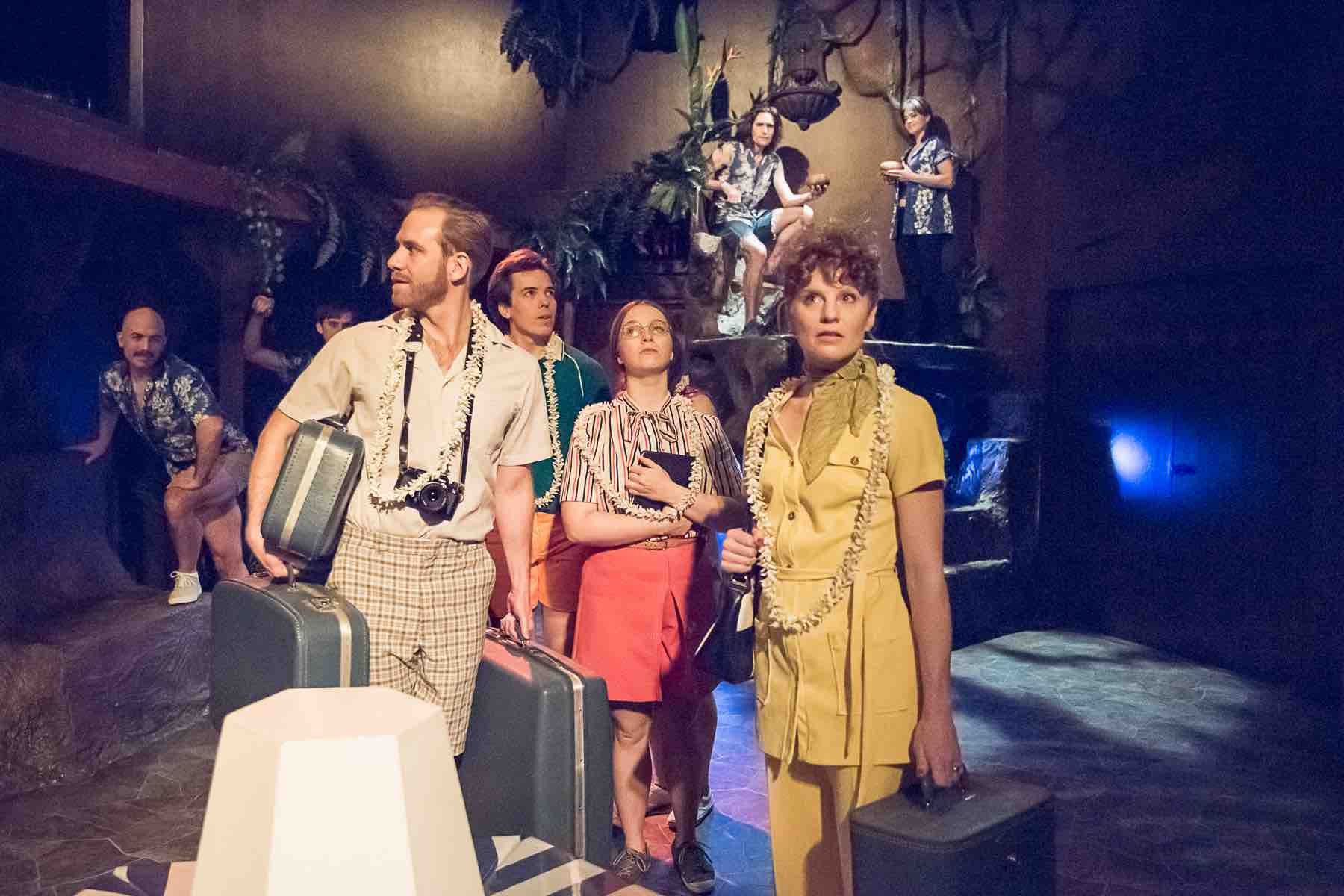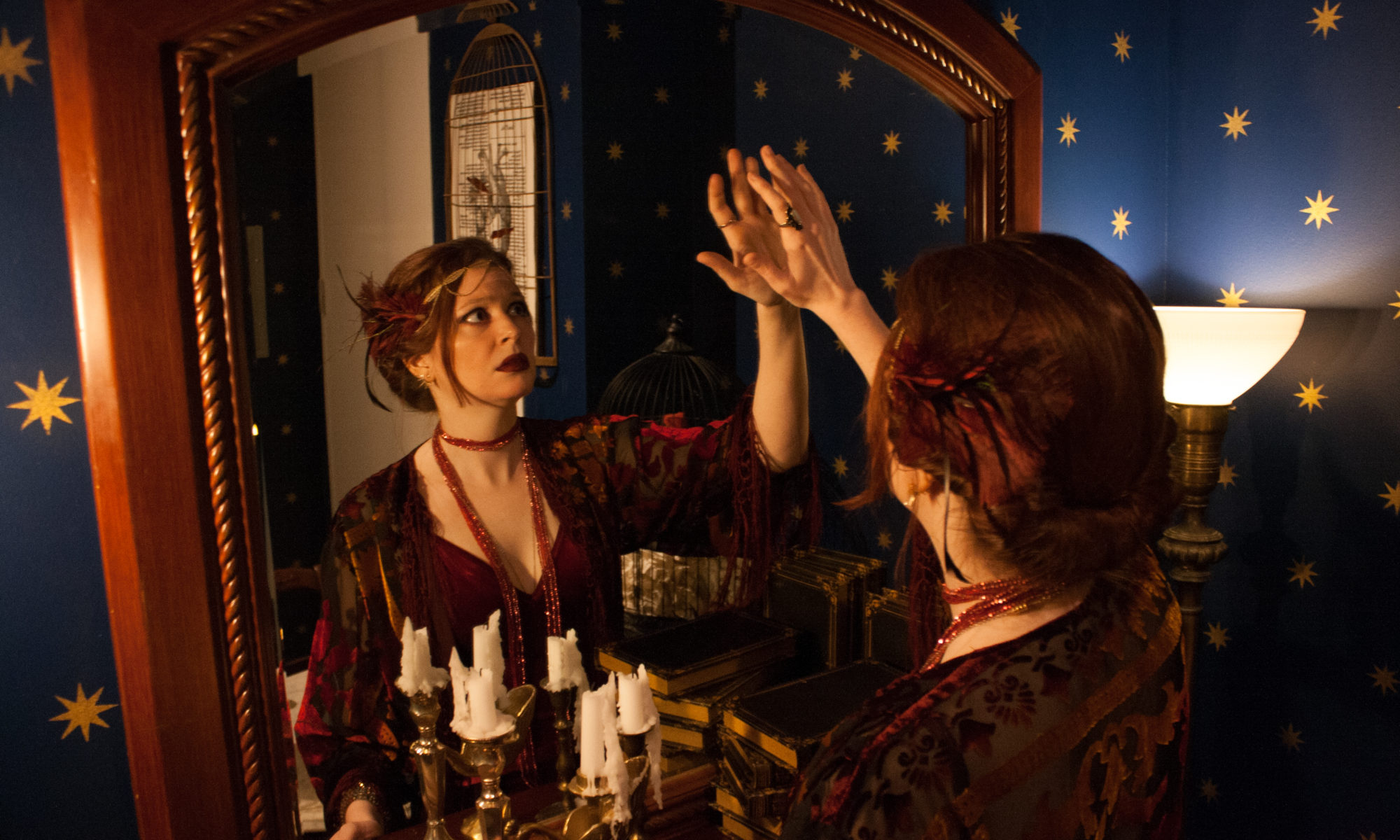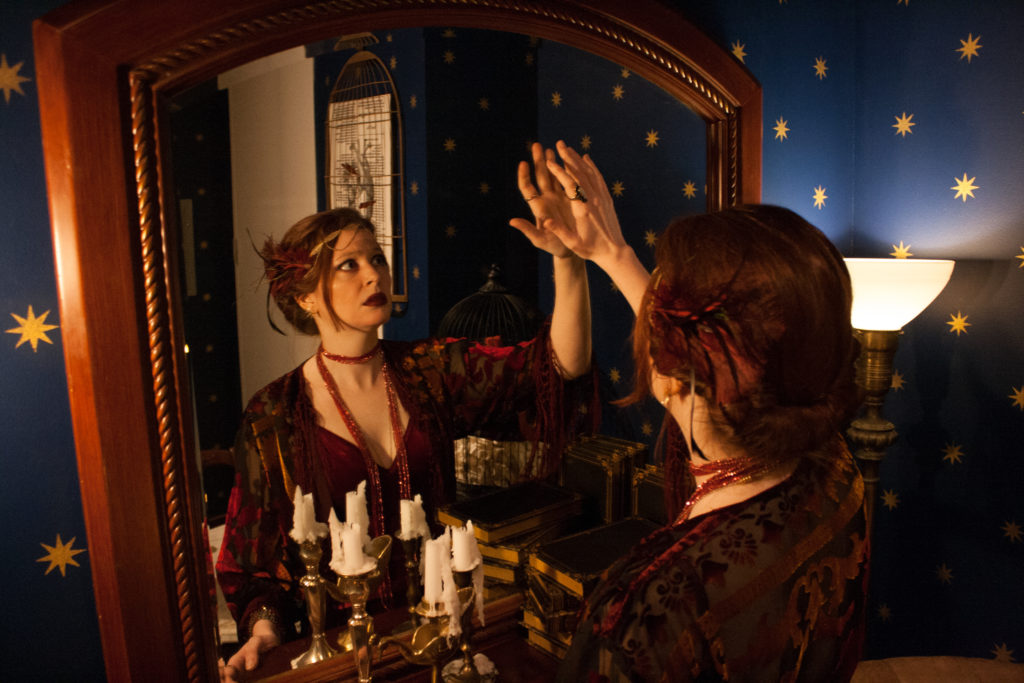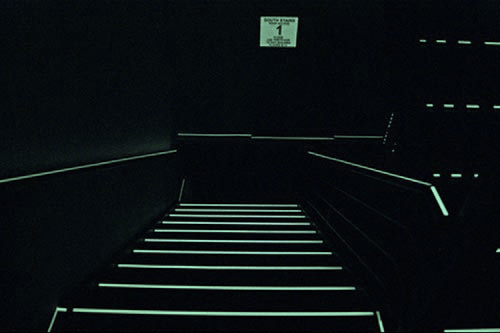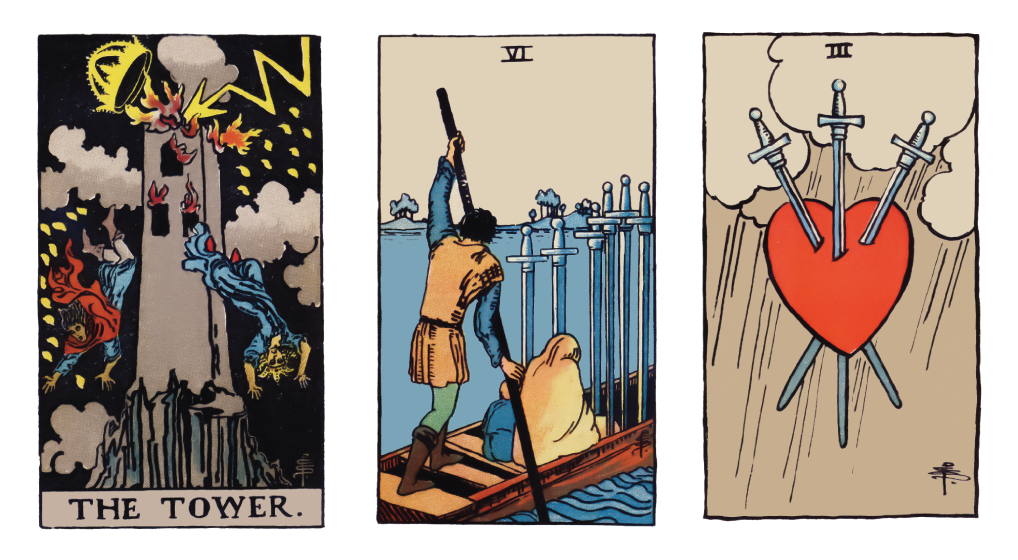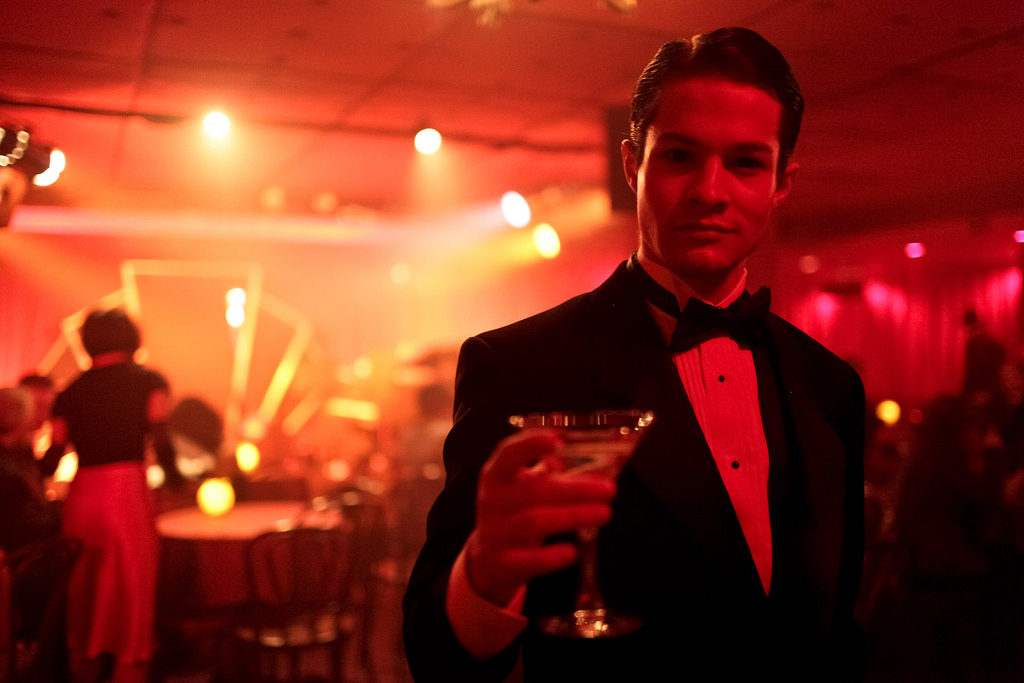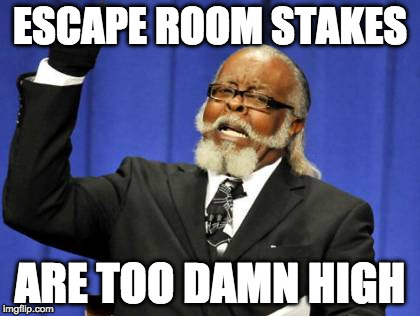Given the most innovative thing about immersives, “Rule #2: The audience is active,” it’s tempting as an immersive writer to create stories about YOU, the audience. Film can’t do it. Fiction can’t do it very well (choose-your-own-adventures hardly made the big time). Theme parks maybe get the chance to explore second-person narratives, but the stories they tell tend to be simple. Immersives provide a more complex story-platform, with detailed worlds and an empowered audience doing things, making choices, even talking. The temptation is great to make the audience the Star in the cinematic world. Haven’t you always wanted to be the Star?
Most escape rooms do precisely that. Some immersive theatre projects have dabbled in it, too.
But does that pay off?
Case study: The Grand Paradise
I am a huge fan of the work of Third Rail Projects. Anytime they produce anything that I can’t see (I’m looking at you, Behind the City!) is a cause for mourning in my household. But I am about to be critical, something I don’t usually do in this blog, because one of their shows taught me a lesson in immersive writing.
Back in 2016, when The Grand Paradise announced that it was closing, Cameron and I made a special last-minute trip to NYC. I’ve recounted before that I had some bad luck that night—being grouped with a Talker, not getting either part of the coffin/bird sequence, which surely would have been a highlight for me (imagine missing the Tea Party in Then She Fell). But I left that show turned-off for a more fundamental reason than bad luck.
The show was about me.
The Grand Paradise transported you to a 1970s pleasure resort, brimming with cocktails, water tanks, and New Age-ism. People wearing very little greeted you with leis and knowing smiles. A straight-laced nuclear family appeared, but was quickly broken up by the resorts many temptations. There was also a creepy fountain of youth, too, but that’s about all the plot you need to know.

When not in set dance numbers, the Resort characters spent their energies seducing me. They looked straight at me and told me I needed to change, or realize who I am, or set myself loose on the world, etc. etc. The show had two sides, Family versus Resort, and they wanted me as a member of the Resort. Seducing me was the heart of the experience. I remember in particular a map-making, fortune-telling sequence about my past, present, future. Then there was a meditation on how I use my time. And ropes as metaphors.
I was there to be transported, and yet all the monologues kept prompting me strangely enough to think about Strange Bird (my future ambitions). That’s nice, but unexpected. That’s not why I came here. The characters again and again kept pushing me into my head. That higher plane we aim for in the theatre experience—where the head shuts up and the heart takes over—was unreachable.
I like introspection. I have a solidly introspective moment in the tarot readings in The Man From Beyond, but introspection does not make a good story-experience. Third Rail always likes to ask personal history questions, and those usually allow you to make a stronger connection with the character you’re with, but in Grand Paradise the questions were pervasive, and they never looped back to the character who was asking them. I do think Third Rail designed the show to be about the audience, for the show to seduce us as equally as the family (our stand-ins) are seduced and set free.
I bucked against the role they wanted me to play the whole time. When I left, it was the first time I had no desire to return to a multi-pathed immersive. I didn’t have the sense that there was more story for me to uncover—and damn, did it make me uncomfortable.
Case study: Sweet & Lucky
The night before I visited The Grand Paradise, I had been to Third Rail Project’s antiques shop in Denver, Sweet & Lucky. This was a hard act to follow.
It opened with characters ushering us from an antique shop to an outdoor funeral. They handed out umbrellas, and some folks had to share—because it was pouring rain inside this warehouse. I stepped onto the astroturf. Who was dead? We sang a hymn badly. Slowly, characters peeled the congregation off in groups, and the story that would answer my burning question began. When we returned at the close of the show to the funeral, there was no rain—because our tears had taken its place.
This show had nothing to do with me—so it had everything to do with me. I watched a romance in its many stages, its ripples through time, how a life touches another life. There was even a scene where the couple had a devastating fight, and despite clues to the contrary, I left thinking they had separated permanently but was later convinced by friends afterwards that they had indeed made it up. (So that says something profound about how sensitive I am to conflict…). I can’t look at a tree or a robot or a glass dish the same way again.

Through specificity, we get at universality. A story with characters with distinct points of view and rich details resonated with me—they felt truly human, and so felt more like me. The details would be radically different, sure, but I could easily be the person in that coffin.
While actors looked at me, drew me in, even gave me light roles to play, I never felt self-conscious. I was wholly in my heart. I was feasting on them. Who I was didn’t matter. I was not the star—they were. And that was a good thing.
pitfalls of second-person narratives
When the audience is the true “star,” that means they have the starring arc. They need to start in one place, pivot, make choices, face consequences, and end in a different place, fundamentally changed. That’s…not easy to do. If you insist on making the audience the star of the story, you can only address the audience in the most generic way possible. The number of rich personalities who have come through The Man From Beyond have taught me it’s always best to let them be them—and invest in interesting things happening around them.
By calling the audience to be the star, you’ll be manipulating them constantly along a designed arc, so that you will most likely trigger self-consciousness—the enemy. People may think they want to be in the spotlight, but they react viscerally against it most of the time when you put them there. You may force them into a role that doesn’t suit them, or on the flip-side, not build a detailed arc at all. (If you want to do this, explore Odyssey Works, which tailors experiences successfully, but for only one person at a time). I’d like to see an immersive succeed at making me the star, but I haven’t seen it yet. Perhaps there are lessons from larping that I need to learn, which are much more emergent and flexible than immersives, but what I do know for sure is…
You must always have a character.
Characters HAVE POV
Grand Paradise was missing characters. I paused at the playbill on the door at the exit, but I honestly didn’t recognize any difference among the paradise characters. They all had the same point of view. I wasn’t convinced that there was any additional insights to be gleaned from the story. Whereas I met impactful characters in Sweet & Lucky—I even believe that one character was another character but older, a theory met with much acclaim by my friends. Now that’s interesting.
Characters have points of view, an opinion about what is happening that differs from the rest of the company. The plot proper should tease out character, prompting the person to show their true colors. This goes beyond the nonsense that actors make up, like what their characters like to eat for breakfast. I’m talking about what the writer shows in the story.
You can have a story without a separate character than the audience, but it’s not going to be particularly compelling. It’s going to be a choose-your-own-adventure, and those burnt out in the night for good reason. At the very least, you need a sidekick. And I’d wager that arcs are more successful when they’re fully in the writer’s hands and not in the audience’s heads. It’s easier to find yourself when you’re lost in somebody else’s world, if you will, then when someone insists on staring at you and asking you probing questions and urging you to change. Or worse—not having any character look at you at all.
What this means for Escape Rooms
Escape rooms often advertise YOU as the STAR. Very rarely does a game deliver the storied experience you’re promised on the website. Sometimes you’re given a role and sometimes you’ve just stumbled upon a rogue submarine, but it’s not very common for the arc to go beyond “in trouble” to “we’re saved!” If you’re given a role, it’s lampshading—no role-play is needed in the actual game. It is the rare Heist that calls upon you to be sneaky in the slightest.
So while escape rooms may think they’re delivering a cinematic experience where you (finally!) get to play Indiana Jones, throwing challenges at you doesn’t really amount to much. Cinema is, after all, about story arcs. We like to see people change, and thereby learn about ourselves.
I’d like to see more escape rooms featuring supporting or starring characters. Even if you’re not interested in involving live actors, you can still have a character presence. Escape rooms have always compelled me because they scratched an unscratched itch of mine: as a young girl at a slumber party, I always wanted to rifle through my friend’s drawers, discover her drawings, her secrets, her handwriting, the album in her CD player, all the things she loves and perhaps find the voodoo doll devoted to all the things she hates. I wanted to know how another life is lived.

I doubt I’m alone in that curiosity. Escape rooms should lean into that unfulfilled desire.
What is a space without a human presence? It’s meaningless, un-immersive, a game at best. But a space with a distinct human presence—logic, reason, passion, handwriting. That’s a space I want to explore, and maybe, just maybe, I’ll come out the other side a bit different.
Yes, I know: most escape rooms aren’t after the same sort of “audience transformation” that I seek. But if you want a truly memorable experience? The kind that makes super-fans? It’s time to start calling ourselves artists—and to start thinking about characters beyond the players.


